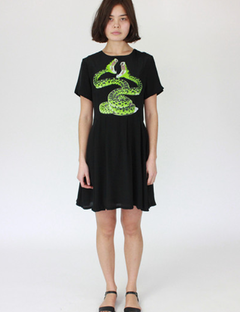By Adelle Rodda
You don’t need a green thumb to know that plants grow from seeds, but how does one grow seedless fruit crops, like grapes, bananas or oranges?
The scientific term for these fruit sans seeds is parthenocarpy – which translates to “virgin fruit” – a phenomenon where fruit is formed without fertilization. These parthenocarpic fruit are sterile (unable to make baby plants) but there are orchards full of them. Yet if they have no seeds, how do they make new plants?
It’s easy to mistakenly assume that genetic engineering is responsible for the pip-free eating pleasure of virgin fruits and while humans have definitely given these crops a helping hand, many of these plants arose from natural mutations in the wild.
The ubiquitous navel orange originated in Bahia, Brazil from a clump of freak trees that produced seedless citrus. And vines in Constantinople (now Istanbul), Turkey bore the first bunches of seedless grapes that we pay ridiculous prices for at the supermarket today.
Cuttings were made of these “freaks of nature”, which were grafted onto existing – seeded fruit producing – plants to create an army of virgin fruit crops.
Grafting is simply attaching part of one plant onto the base of another already growing plant. The two then fuse into one plant and carry on plant business as usual. This method is what allows growers to keep producing more seedless-fruit bearing plants.
Because the trees in an orchard of seedless fruit are all grown from bits of one “mother” tree (asexually) they are genetically identical to one another. Now orchards of clones all bearing identical fruit definitely has its upsides – like consistency in appearance and taste – but without genetic diversity, when one plant gets sick the entire crop can go down. Just like the now extinct Gros Michel banana.
The bananas that our grandparents ate looked and tasted better than the ones we eat today. Nowadays the banana that graces supermarket shelves, smoothies, and breakfast bowls across the globe – accounting for 95% of banana sales worldwide – is the Cavendish, but until the early 1960’s it was the Gros Michel that was eaten by the masses.
A larger and apparently much tastier banana than the Cavendish, the Gros Michel met an untimely demise at the hands of the deadly Fusarium fungus – commonly known as Panama disease – which causes plants to die of thirst. Crops in Suriname were the first to fall, then like dominos, the rest of the world’s Gros Michel crops toppled. A breakfast crisis of epic proportions was narrowly averted by replacing the Gros Michel with the Cavendish, a lesser banana, but resistant to Panama disease – or so they thought.
In 1992 a new strain of the incurable fungus, capable of attacking the Cavendish was found in Asia. This modern day Panama disease has since spread, wiping out banana crops in Africa and the Middle East. It appears that soon the Cavendish could meet the same fate as the Gros Michel with the UN releasing a warning for banana growing countries to up the anti in measures to prevent the spread of the disease and protect the Cavendish crops.
Imagine a world without bananas…
Personally I find them revolting but the majority of people would disagree with me. New Zealanders are some of the biggest banana consumers in the world, the average kiwi chows down on more than 18kg of the yellow clones in a year.












Comments